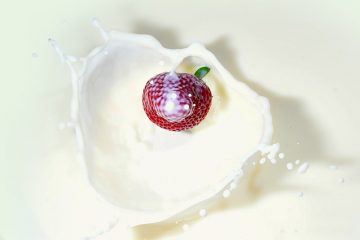People frequently ask if their Persian cats can eat dog food during a veterinary visit.
The short answer is: yes, Your Persian cat can consume a small amount of dog food without suffering poisoning or lasting effects.
The longer answer, however, concerns the species-specific differences between our furry friends and canine friends.
Although eating stolen dog food does not harm Persian cats, it certainly does not contribute to their overall health.
Here’s what you need to know about your Persian cats’ nutrition and why you shouldn’t give them dog food in the long run.
Can Persian cats safely eat dog food forever?
No, Persian cats cannot be fed dog food.
Feeding your feline only dog food for a long period of time can have harmful, if not fatal, consequences.
This is because dog food and Persian cat food contain different nutritional components to meet the different nutritional needs of these two pets.
Persian cats and dogs have different nutritional needs
Although Persian cats and dogs share our homes and hearts, nature has transformed them over time into very different creatures with very different nutritional needs.
Persian cats are obligate carnivores, which means they need a diet of animal proteins and fats to keep all their body systems functioning the right way.
Dogs, however, are omnivores. Omnivores have a more flexible diet and can easily consume both vegetables and meat.
The diet of dogs does not go hand in hand with the specific nutritional needs of Persian feline.
The differences between Persian cat food and dog food
Here are some basic differences in the composition of dog food and Persian cat food.
Taste
Persian cats respond to tastes differently than dogs. They, unlike dogs, do not have the ability to perceive sweetness, and the number of taste receptors is also different in the two pets.
Persian cats have only 470 taste buds, while dogs have 1,700. By comparison, humans have over 9,000.
Persian cat food is specifically designed to be more palatable to entice our occasionally picky (and tasteless) furry friends to enjoy it.
Note: Persian cats rarely want to eat dog food because they find it unappetizing. Dogs, on the other hand, enjoy the delicious protein content of Persian cat food.
Protein
Because Persian cats are pure carnivores by nature, they need a diet with a much higher protein content than dog food.
Many brands and varieties of dog food have a higher protein content, but overall, even these specific foods do not achieve the high protein content that Persian cats need to stay healthy.
Most dog foods contain an “as-fed” protein content of 18-26%. For Persian cats, on the other hand, I usually recommend aiming for protein content of at least 32-35%, with an optional canned cat food supplement with 40-50% protein.
Taurine
Persian cats (like humans) are among the few mammals that are unable to produce taurine themselves, so they must obtain this important element from food.
Persian cats that have an insufficient amount of taurine in their diet may suffer:
- Digestive problems
- loss of vision
- weakened heart (dilated cardiomyopathy)
All commercially available Persian cat foods contain taurine, whereas it is rarely found in dog foods.
Arachidonic acid
Arachidonic acid is a fatty acid that cannot be produced by Persian cats themselves but must be ingested with food.
Persian cats suffering from low levels of arachidonic acid show non-specific signs of disease, like:
- Occasionally, increased skin problems
- Abnormal liver and kidney values
Dogs are capable of producing this fatty acid on their own, which is why dog food is rarely fortified with this element.
Vitamin A
Vitamin A is another element in the diet that Persian cats cannot synthesize themselves and therefore must be supplied in the diet.
Although dog food often contains vitamin A supplements, these amounts are insufficient for the optimal nutrition of Persian cats.
Persian cats suffering from vitamin A deficiency show:
- Weakness and muscle wasting
- Possible night blindness
- Poor coat quality
Niacin
It is crucial that your Persian cats’ diet include niacin, as they cannot produce it themselves.
Animal tissues are the most common source of niacin in Persian cat foods, but plants also contain small amounts.
However, a diet low in animal tissue and higher in plant tissue, such as cereal, may not provide your felines with the correct level of niacin they require.
The life stage is also important
There is an organization called the Association of American Feed Control Officials (AAFCO for short) that closely monitors and regulates the pet food industry.
Pet foods that meet AAFCO’s nationally agreed-upon nutrient levels are labeled as “…formulated to meet the AAFCO nutritional profile of cat foods for… (a specific life stage).”
In the pet food industry, life stages are divided into three main groups:
- Maintenance
- All life stages
- Growth
Not only do Persian cats have specific general needs for protein, vitamins, and nutrients, but these vary by life stage.
Fast-growing Persian kittens require more nutrients and energy sources, while healthy older Persian cats need more protein to maintain muscle as they grow old.
Dog food, with its lower levels of protein and other nutrients, cannot provide long-term nutrition for your Persian friends at any of their life stages.
High-quality Persian cat food is necessary
The best way to ensure that your Persian cats live with you for a long time is to provide a high-quality, healthy diet that suits their needs.
Dog food is non-toxic and does not hurt if your felines eat a few pieces, but it is not suitable for their nutritional needs.


